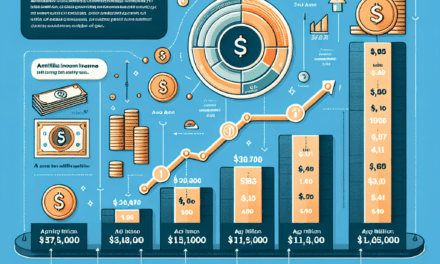“Wall Street Soars: Riding the Trump Rally Wave to New Heights”
Introduction
Wall Street is set to continue its upward trajectory as the market experiences a sustained rally driven by policies and economic optimism associated with the Trump administration. Investors are buoyed by expectations of tax reforms, deregulation, and infrastructure spending, which have collectively fueled confidence in corporate earnings and economic growth. This positive sentiment has been reflected in the stock market’s performance, with major indices reaching new highs. As traders and analysts assess the potential long-term impacts of these policy shifts, Wall Street remains poised for further gains, underscoring the market’s responsiveness to political and economic developments.
Impact Of Trump’s Economic Policies On Wall Street Gains
The impact of President Donald Trump’s economic policies on Wall Street has been a subject of considerable analysis and debate. Since his election, the financial markets have experienced a notable rally, driven by a combination of investor optimism and policy expectations. This rally, often referred to as the “Trump bump,” has been characterized by significant gains in major stock indices, reflecting the market’s response to the administration’s economic agenda.
One of the primary factors contributing to Wall Street’s upward trajectory is the anticipation of corporate tax cuts. The Trump administration’s promise to reduce the corporate tax rate from 35% to 20% has been met with enthusiasm by investors, who expect that such a reduction would lead to increased corporate profits. This, in turn, would likely result in higher dividends and share buybacks, further boosting stock prices. Moreover, the prospect of repatriation of overseas profits at a lower tax rate has also fueled expectations of increased capital inflows into the U.S. economy, providing additional support to the markets.
In addition to tax reform, deregulation has been a cornerstone of Trump’s economic policy. The administration’s efforts to roll back regulations, particularly in the financial sector, have been welcomed by Wall Street. The easing of regulatory burdens is expected to enhance profitability for banks and other financial institutions, thereby contributing to the overall market rally. Furthermore, the administration’s focus on reducing regulations in other industries, such as energy and manufacturing, has also been perceived positively by investors, who anticipate that these measures will stimulate economic growth and, consequently, corporate earnings.
While tax cuts and deregulation have been central to the Trump-driven rally, infrastructure spending is another policy area that has captured the attention of investors. The administration’s proposal to invest in the nation’s infrastructure has been viewed as a potential catalyst for economic expansion. Such investments are expected to create jobs, increase productivity, and drive demand for materials and services, all of which could have a positive impact on corporate revenues and, by extension, stock prices.
However, it is important to consider the potential risks associated with these policies. For instance, the implementation of tax cuts could lead to an increase in the federal deficit, raising concerns about long-term fiscal sustainability. Additionally, while deregulation may boost short-term profits, it could also increase systemic risks, particularly in the financial sector. Moreover, the success of infrastructure spending initiatives depends on effective execution and bipartisan support, which may prove challenging in a polarized political environment.
Despite these potential challenges, the overall sentiment on Wall Street remains optimistic. Investors continue to focus on the potential benefits of Trump’s economic policies, driving stock prices higher. The ongoing rally reflects a belief that these policies will ultimately lead to sustained economic growth and improved corporate performance.
In conclusion, the Trump-driven rally on Wall Street can be attributed to a combination of anticipated tax cuts, deregulation, and infrastructure spending. While these policies have generated significant enthusiasm among investors, it is crucial to remain mindful of the associated risks and uncertainties. As the administration continues to implement its economic agenda, the impact on Wall Street will likely remain a topic of keen interest and analysis.
Key Sectors Benefiting From The Trump-Driven Rally
The Trump-driven rally has been a significant force in shaping the financial landscape, with Wall Street poised for gains as various sectors continue to benefit from the policies and economic optimism associated with the former president’s administration. This rally, characterized by a surge in stock prices and investor confidence, has been fueled by a combination of tax reforms, deregulation, and a pro-business stance that has invigorated several key sectors. As we delve into the specifics, it becomes evident that certain industries have reaped substantial rewards, contributing to the overall bullish sentiment in the market.
To begin with, the financial sector has been one of the primary beneficiaries of the Trump-driven rally. The administration’s efforts to roll back regulations, particularly those imposed by the Dodd-Frank Act, have provided banks and financial institutions with greater flexibility and reduced compliance costs. This deregulation has not only improved profitability but also encouraged increased lending and investment activities. Consequently, financial stocks have experienced significant appreciation, reflecting the sector’s enhanced growth prospects and investor confidence.
In addition to the financial sector, the energy industry has also thrived under the Trump administration’s policies. The emphasis on energy independence and the promotion of fossil fuels have led to a resurgence in domestic oil and gas production. By reducing restrictions on drilling and opening up federal lands for exploration, the administration has bolstered the energy sector’s output and profitability. This has been further supported by the withdrawal from the Paris Agreement, which signaled a shift away from stringent environmental regulations. As a result, energy companies have seen their stock prices rise, driven by increased production and favorable market conditions.
Moreover, the manufacturing sector has experienced a revival, largely due to the administration’s focus on revitalizing American industry. The implementation of tariffs on imported goods, particularly from China, has aimed to protect domestic manufacturers and encourage the repatriation of production facilities. While these measures have sparked debates over trade wars and their long-term implications, they have undeniably provided a short-term boost to the manufacturing sector. Companies involved in steel, aluminum, and other key manufacturing industries have reported improved performance, as evidenced by rising stock valuations and increased investor interest.
Furthermore, the technology sector has continued to flourish amid the Trump-driven rally, albeit for different reasons. While not directly influenced by deregulation or trade policies, the sector has benefited from the overall economic optimism and increased consumer spending power. The tax cuts implemented during the administration have left consumers with more disposable income, which has translated into higher demand for technology products and services. Consequently, tech companies have experienced robust growth, with their stock prices reflecting the sector’s continued innovation and market dominance.
In conclusion, the Trump-driven rally has had a profound impact on Wall Street, with key sectors such as finance, energy, manufacturing, and technology reaping substantial benefits. The combination of deregulation, tax reforms, and a pro-business environment has created a fertile ground for growth and investment. As these sectors continue to thrive, the overall market sentiment remains positive, with investors eagerly anticipating further gains. While the long-term sustainability of this rally remains a topic of discussion, there is no denying the immediate impact it has had on Wall Street and the sectors that have been at the forefront of this economic resurgence.
Investor Sentiment And Market Trends During The Trump Era
Investor sentiment and market trends during the Trump era have been characterized by a unique blend of optimism and volatility, driven largely by the administration’s economic policies and rhetoric. As Wall Street remains poised for gains amid the ongoing Trump-driven rally, it is essential to understand the factors contributing to this financial landscape. The Trump administration’s focus on deregulation, tax cuts, and economic growth has played a pivotal role in shaping investor confidence. These policies have been perceived as business-friendly, encouraging corporations to expand and invest, thereby boosting stock market performance. The Tax Cuts and Jobs Act of 2017, for instance, significantly reduced corporate tax rates, leading to increased profitability for companies and, consequently, higher stock valuations.
Moreover, the administration’s emphasis on deregulation has been another critical factor in driving market optimism. By rolling back numerous regulations across various sectors, the Trump administration aimed to reduce the compliance burden on businesses, thereby fostering a more conducive environment for growth and innovation. This deregulation has been particularly impactful in industries such as energy and finance, where companies have experienced increased operational flexibility and cost savings. As a result, investors have responded positively, driving stock prices higher and contributing to the overall rally.
In addition to these domestic policies, the Trump administration’s approach to international trade has also influenced market trends. The renegotiation of trade agreements and the imposition of tariffs have created both opportunities and challenges for investors. While some sectors have benefited from protective measures, others have faced increased costs and uncertainty. Nevertheless, the administration’s efforts to prioritize American interests in global trade have been viewed favorably by many investors, who see potential for long-term economic gains.
Despite these positive drivers, it is important to acknowledge the volatility that has accompanied the Trump-driven rally. The administration’s unpredictable communication style and frequent policy shifts have occasionally led to market turbulence. For instance, abrupt announcements regarding trade negotiations or geopolitical tensions have resulted in short-term market fluctuations. However, these episodes of volatility have often been short-lived, with markets quickly rebounding as investors refocus on the underlying economic fundamentals.
Furthermore, the Federal Reserve’s monetary policy has played a crucial role in shaping market trends during the Trump era. The central bank’s decisions regarding interest rates and quantitative easing have had significant implications for investor sentiment. While the Fed operates independently, its actions have often been influenced by the broader economic environment shaped by the administration’s policies. Low interest rates, in particular, have supported the rally by making borrowing cheaper for businesses and consumers, thereby stimulating economic activity and boosting stock prices.
As Wall Street continues to navigate the complexities of the Trump-driven rally, it is essential for investors to remain vigilant and adaptable. While the administration’s policies have created a favorable environment for growth, the inherent unpredictability of political and economic developments necessitates a cautious approach. By staying informed and responsive to changing conditions, investors can better position themselves to capitalize on opportunities while mitigating potential risks.
In conclusion, the Trump era has been marked by a distinctive blend of optimism and volatility in investor sentiment and market trends. The administration’s focus on deregulation, tax cuts, and economic growth has driven a significant rally on Wall Street, while also introducing elements of uncertainty. As the market remains poised for gains, understanding the interplay of these factors is crucial for investors seeking to navigate this dynamic landscape effectively.
Analysis Of Wall Street’s Performance Under Trump’s Administration
The performance of Wall Street under the Trump administration has been a subject of considerable analysis and debate, with many attributing the market’s gains to the policies and economic strategies implemented during this period. As the Trump-driven rally continues to influence market dynamics, investors and analysts alike are keenly observing the factors contributing to this upward trajectory. One of the primary drivers of Wall Street’s performance has been the administration’s focus on deregulation. By rolling back numerous regulations across various sectors, the Trump administration aimed to create a more business-friendly environment. This deregulation has been particularly impactful in industries such as finance, energy, and manufacturing, where reduced regulatory burdens have allowed companies to operate with greater flexibility and lower costs. Consequently, this has led to increased profitability and, in turn, higher stock valuations.
In addition to deregulation, the administration’s tax reform policies have played a significant role in bolstering Wall Street’s performance. The Tax Cuts and Jobs Act of 2017, which lowered the corporate tax rate from 35% to 21%, provided a substantial boost to corporate earnings. This tax relief not only increased the disposable income of corporations but also encouraged repatriation of overseas profits, further fueling investment in domestic operations. As a result, many companies have been able to enhance shareholder value through stock buybacks and increased dividends, contributing to the overall market rally.
Moreover, the Trump administration’s emphasis on economic growth through infrastructure spending and trade negotiations has also had a positive impact on Wall Street. The promise of significant infrastructure investment has generated optimism among investors, as such projects are expected to stimulate economic activity and create jobs. Meanwhile, the administration’s approach to trade, characterized by renegotiating existing agreements and imposing tariffs, has been met with mixed reactions. While some sectors have benefited from protective measures, others have faced challenges due to retaliatory tariffs. Nonetheless, the overall effect on the market has been one of cautious optimism, as investors weigh the potential long-term benefits of a more balanced trade landscape.
Despite these positive factors, it is important to acknowledge the risks and uncertainties that accompany the Trump-driven rally. Geopolitical tensions, fluctuating interest rates, and concerns over economic sustainability pose potential challenges to continued market growth. Additionally, the reliance on fiscal stimulus and tax cuts raises questions about the long-term fiscal health of the economy. As such, investors must remain vigilant and consider these variables when making investment decisions.
In conclusion, Wall Street’s performance under the Trump administration has been marked by significant gains, driven by a combination of deregulation, tax reform, and economic growth initiatives. While the market has benefited from these policies, it is crucial for investors to remain aware of the potential risks and uncertainties that could impact future performance. As the rally continues, a balanced approach that considers both the opportunities and challenges will be essential for navigating the evolving financial landscape. Through careful analysis and strategic decision-making, investors can position themselves to capitalize on the gains while mitigating potential downsides, ensuring a well-rounded approach to market participation.
Future Outlook: Sustaining The Trump-Driven Market Rally
As Wall Street continues to experience a robust rally driven by policies and sentiments associated with the Trump administration, investors and analysts alike are keenly observing the factors that could sustain this upward momentum. The market’s performance has been buoyed by a combination of tax reforms, deregulation, and a generally pro-business stance that has invigorated investor confidence. However, the question remains: can this rally be sustained in the long term?
To begin with, the tax cuts implemented during the Trump administration have played a significant role in boosting corporate profits, thereby enhancing stock valuations. By reducing the corporate tax rate, companies have been able to retain more of their earnings, which in turn has been reinvested into business expansion, stock buybacks, and dividend increases. This fiscal stimulus has provided a substantial tailwind for the market, encouraging both domestic and international investors to increase their exposure to U.S. equities.
Moreover, the administration’s focus on deregulation has further fueled market optimism. By rolling back numerous regulations across various sectors, the government has reduced compliance costs and barriers to entry, allowing businesses to operate more efficiently and profitably. This deregulation has been particularly beneficial for industries such as energy, finance, and manufacturing, which have historically been heavily regulated. As a result, these sectors have seen significant gains, contributing to the overall market rally.
In addition to these domestic factors, the global economic environment has also played a supportive role. The synchronized growth of major economies around the world has led to increased demand for U.S. goods and services, further bolstering corporate earnings. This global growth narrative has been complemented by relatively low interest rates, which have made equities more attractive compared to fixed-income investments. Consequently, investors have been more inclined to allocate capital to stocks, driving prices higher.
However, sustaining this rally will require careful navigation of potential headwinds. One such challenge is the possibility of rising interest rates. As the Federal Reserve seeks to normalize monetary policy in response to a strengthening economy, higher interest rates could increase borrowing costs for companies and consumers alike. This could potentially dampen economic growth and corporate profitability, thereby exerting downward pressure on stock prices.
Furthermore, geopolitical uncertainties, such as trade tensions and political instability, could also pose risks to the market’s continued ascent. While the Trump administration’s protectionist trade policies have been aimed at benefiting domestic industries, they have also led to retaliatory measures from trading partners. These trade disputes could disrupt global supply chains and negatively impact corporate earnings, particularly for multinational companies.
In conclusion, while Wall Street is currently poised for gains amid the ongoing Trump-driven rally, sustaining this momentum will require a delicate balance of policy measures and economic conditions. The interplay between tax reforms, deregulation, global growth, and potential headwinds will be crucial in determining the future trajectory of the market. Investors will need to remain vigilant and adaptable, as the landscape continues to evolve in response to both domestic and international developments. As such, the future outlook for sustaining the Trump-driven market rally remains cautiously optimistic, contingent upon the ability to navigate these complex and interrelated factors.
Comparing Wall Street’s Gains Under Different U.S. Presidents
The performance of Wall Street has long been a barometer for the economic health of the United States, with each presidential administration leaving its unique imprint on the financial markets. As the Trump-driven rally continues to bolster investor confidence, it is instructive to compare Wall Street’s gains under different U.S. presidents to understand the broader economic implications. Historically, the stock market’s performance has been influenced by a myriad of factors, including fiscal policies, geopolitical events, and technological advancements. However, the role of presidential leadership in shaping economic sentiment cannot be understated.
Under President Donald Trump, Wall Street experienced a significant upswing, characterized by a series of record-breaking highs. This rally was largely driven by a combination of corporate tax cuts, deregulation, and a pro-business stance that resonated with investors. The Tax Cuts and Jobs Act of 2017, in particular, played a pivotal role in boosting corporate earnings, thereby fueling stock market gains. Furthermore, Trump’s emphasis on deregulation across various sectors, including finance and energy, created an environment conducive to business growth and innovation. As a result, the Dow Jones Industrial Average, the S&P 500, and the Nasdaq Composite all saw substantial increases during his tenure.
In contrast, the stock market’s performance under previous administrations varied significantly. During President Barack Obama’s time in office, Wall Street also experienced notable gains, albeit under different circumstances. Taking office in the midst of the 2008 financial crisis, Obama inherited an economy in turmoil. His administration’s implementation of the American Recovery and Reinvestment Act, along with measures to stabilize the financial system, helped restore investor confidence. Consequently, the stock market embarked on a prolonged bull run, with the S&P 500 more than tripling in value by the end of his second term. This recovery was marked by a focus on rebuilding the economy and addressing systemic risks within the financial sector.
Looking further back, the presidency of George W. Bush presented a mixed picture for Wall Street. The early years of his administration were marred by the bursting of the dot-com bubble and the September 11 attacks, both of which contributed to market volatility. However, the subsequent recovery was bolstered by tax cuts and increased government spending, leading to a period of economic expansion. Despite these efforts, the latter part of Bush’s presidency was overshadowed by the onset of the 2008 financial crisis, which resulted in significant market declines.
As we consider the ongoing Trump-driven rally, it is essential to recognize the broader context of Wall Street’s performance under different presidents. While each administration faced unique challenges and opportunities, the common thread remains the interplay between policy decisions and market dynamics. The current rally, poised for further gains, underscores the importance of investor sentiment and the impact of fiscal policies on economic growth. As Wall Street continues to navigate an ever-evolving landscape, the lessons gleaned from past presidencies offer valuable insights into the potential trajectories of future market performance. Ultimately, the intricate relationship between political leadership and financial markets will continue to shape the economic narrative of the United States.
The Role Of Tax Reforms In Boosting Wall Street’s Performance
The recent surge in Wall Street’s performance can be largely attributed to the tax reforms initiated during the Trump administration, which have played a pivotal role in shaping the current economic landscape. These reforms, primarily characterized by the Tax Cuts and Jobs Act of 2017, have significantly influenced corporate profitability and investor sentiment, thereby driving the ongoing rally in the stock market. As we delve into the intricacies of these tax reforms, it becomes evident that their impact extends beyond mere fiscal policy adjustments, permeating various facets of the economy and financial markets.
To begin with, the reduction in the corporate tax rate from 35% to 21% has been a cornerstone of these reforms, providing a substantial boost to corporate earnings. This decrease in tax liability has allowed companies to retain a larger portion of their profits, which in turn has been reinvested into business operations, capital expenditures, and shareholder returns. Consequently, this has led to an increase in stock buybacks and dividend payouts, further enhancing shareholder value and driving up stock prices. Moreover, the repatriation of overseas profits, incentivized by a one-time tax break, has injected additional liquidity into the domestic economy, further fueling market optimism.
In addition to the direct financial benefits for corporations, these tax reforms have also had a broader impact on economic growth. By incentivizing investment and expansion, the reforms have contributed to job creation and wage growth, thereby bolstering consumer confidence and spending. This positive feedback loop has reinforced the upward trajectory of the stock market, as increased consumer demand translates into higher corporate revenues and profits. Furthermore, the simplification of the tax code has reduced compliance costs for businesses, allowing them to allocate resources more efficiently and focus on strategic growth initiatives.
While the immediate effects of the tax reforms have been largely positive, it is important to consider the potential long-term implications for Wall Street and the broader economy. Critics argue that the reduction in corporate tax rates may exacerbate income inequality, as the benefits are disproportionately skewed towards wealthy individuals and large corporations. Additionally, the increase in the federal deficit resulting from these tax cuts raises concerns about fiscal sustainability and the potential for future economic instability. Nevertheless, proponents contend that the economic growth spurred by these reforms will ultimately offset the initial increase in the deficit, as higher tax revenues from increased economic activity will help to balance the budget over time.
As Wall Street continues to ride the wave of this Trump-driven rally, investors remain cautiously optimistic about the future. The interplay between tax reforms and market performance underscores the complex relationship between fiscal policy and economic growth, highlighting the importance of strategic policymaking in fostering a conducive environment for financial markets. As we move forward, it will be crucial to monitor the evolving economic landscape and assess the long-term impact of these reforms on Wall Street’s performance. In doing so, policymakers and investors alike can better navigate the challenges and opportunities that lie ahead, ensuring that the benefits of this rally are both sustainable and inclusive.
Q&A
1. **What is driving the current rally on Wall Street?**
The rally is driven by optimism surrounding policies and economic plans proposed by then-President Donald Trump, including tax cuts, deregulation, and infrastructure spending.
2. **Which sectors are benefiting the most from the Trump-driven rally?**
Financials, industrials, and energy sectors are among those benefiting the most due to expectations of deregulation and increased infrastructure spending.
3. **How have investors reacted to Trump’s proposed tax cuts?**
Investors have reacted positively, anticipating that corporate tax cuts will boost company profits and lead to increased stock valuations.
4. **What impact has the rally had on the Dow Jones Industrial Average?**
The Dow Jones Industrial Average has reached record highs as a result of the ongoing rally.
5. **Are there any concerns associated with the Trump-driven rally?**
Some concerns include potential overvaluation of stocks and uncertainty about the implementation and effectiveness of Trump’s policies.
6. **How has the bond market responded to the Trump-driven rally?**
The bond market has seen rising yields as investors anticipate higher inflation and interest rates due to expected economic growth and fiscal stimulus.
7. **What role does investor sentiment play in the ongoing rally?**
Investor sentiment plays a significant role, as optimism about economic growth and policy changes fuels buying activity and drives stock prices higher.
Conclusion
Wall Street’s poised gains amid the ongoing Trump-driven rally reflect investor optimism fueled by anticipated pro-business policies, including tax cuts, deregulation, and infrastructure spending. This sentiment has bolstered market confidence, driving stock prices higher. However, while the rally suggests strong economic prospects, it also raises concerns about potential overvaluation and market volatility. Investors should remain cautious, balancing enthusiasm with awareness of geopolitical risks and economic uncertainties that could impact future market performance.





